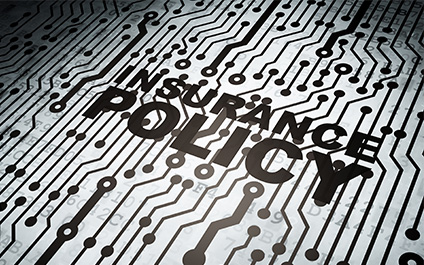
You are under attack. Right now, cybercrime rings in China, Russia, and the Ukraine are hacking into small businesses like yours to steal credit cards, client information, and swindle money directly out of your bank account. Some are even being funded by their own government to attack American businesses, and half of all cyberattacks are aimed at small businesses. The National Cyber Security Alliance reports that one in five small businesses have been victims of cybercrime in the last year. It’s critical that you protect yourself from the following 10 vulnerabilities.
- Poorly trained employees are the biggest risk. It’s common for an employee to infect an entire network by opening and clicking a phishing email designed to look like legitimate correspondence from a trusted source. If they don’t know how to spot infected emails or online scams, employees can easily compromise your entire network.
- We strongly recommend an acceptable use policy that limits the websites employees can access with work devices as well as work material they access with personal devices. We can easily set up permissions that regulate which websites your employees access and what they do with company-owned devices, even granting certain users more freedom than others. You also need to detail what an employee can or cannot do with personal devices when taking work home.
- Weak passwords are bad news; passcodes should be at least eight characters long with both lower and uppercase letters and include symbols and at least one number. On a company cellphone, requiring a passcode makes stolen devices harder to compromise. Again, this can be enforced by your network administrator so employees don’t get lazy and put your organization at risk.
- If your networks aren’t patched, new vulnerabilities (which are common in programs you already use, such as Microsoft Office) can be exploited by hackers. It’s critical that you patch and update your systems frequently. If you’re under a managed IT plan, this can be automated so you never miss an important update.
- Are you backed up in multiple places? Aggressive ransomware attacks, where a hacker holds files for ransom until you pay a fee, can be foiled by backing up your data. You won’t have to pay a crook to get them back. A good backup will also protect you against accidental deletion and natural disasters, and it should be automated.
- One of the fastest ways cybercriminals access networks is by duping employees to download malicious software by embedding it within downloadable files, games, or other innocent-looking apps. This can largely be prevented with a secure firewall and employee training and monitoring.
- Not all firewalls are created equal. A firewall blocks everything you haven’t specifically allowed to enter or leave your network. But all firewalls need monitoring and maintenance, just like all devices on your network, and a weak one does you little good. This, too, should be done by your IT person or company as part of their regular, routine maintenance.
- Many hackers exploit your devices when you connect to public Wi-Fi, getting you to connect to their Wi-Fi instead of the legitimate public one. Always check with a store or restaurant employee to verify the name of the Wi-Fi they are providing. And never access financial or medical data or enter your credit card information when surfing public Wi-Fi.
- It may be one of the oldest tricks in the book, but phishing emails still work. The goal is to get you to download a virus by clicking a link or getting you to enter your login information on a clone of a legitimate website.
- In 2009, social engineers posed as Coca-Cola’s CEO, persuading an executive to open an email with software that infiltrated the network. Social engineering is another old-school tactic, but, like phishing, it works well. Hackers pretend to be you, and people often fall for it.
If you are concerned about cybercriminals gaining access to your network, then call us to learn more about implementing a managed security plan for your business. You’ve spent a lifetime working hard to get where you are and have earned every penny and every client. Why risk losing it all? Get the facts and be certain your business, reputation, and data are protected.